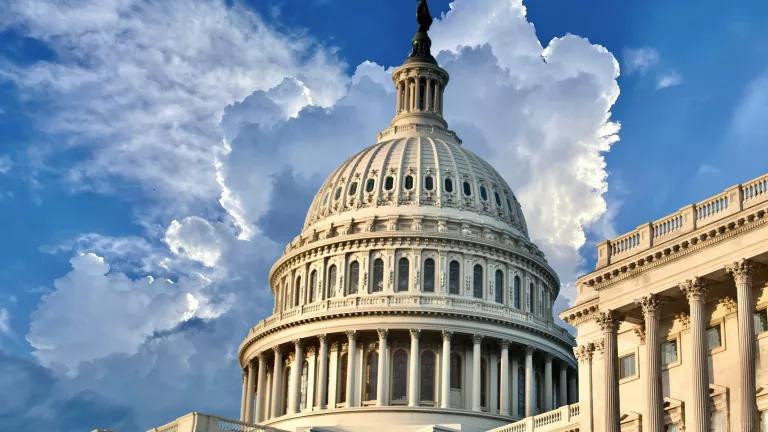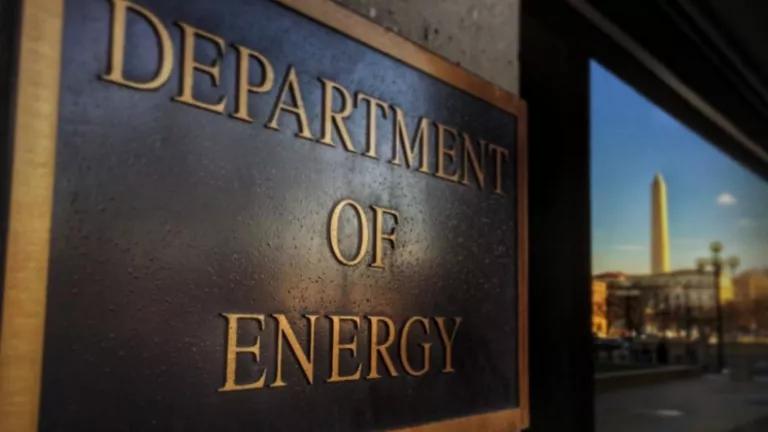Today, when the Department of the Interior released the Final Environmental Impact Statement (FEIS) for the public land component of the long-awaited Desert Renewable Energy Conservation Plan (DRECP) it took a huge step forward in how we plan for conservation and renewable energy on our public lands managed by the Bureau of Land Management (BLM). The FEIS lays a solid foundation for clean energy development on public lands while also recognizing that further planning is needed on the private lands to complete this collaborative desert-wide effort.
'Smart from the Start' Planning
The BLM component of the DRECP is the result of a public process that NRDC, other conservation groups, renewable energy companies and many other diverse stakeholders have been engaged in for more than six years. The plan was developed with a number of "smart from the start" planning hallmarks that NRDC has advocated for years, including:
- Landscape-level planning that identifies areas that should be conserved and areas that are appropriate for development
- Guiding development to low-conflict areas with permitting incentives
- Coordination with transmission planning
- Strategic, regional mitigation to offset impacts from energy development
Conservation Gains
The final BLM plan permanently protects some of the desert's most special places, including the spectacular Silurian Valley, which lies in between Death Valley National Park and the Mojave National Preserve; the biologically rich and diverse Chuckwalla Bench in Riverside County; and the wonderfully unique Amargosa watershed which is home to endemic species found nowhere else on the planet.
The FEIS also includes some important forward progress on key policy issues around conservation in the desert. The plan clarifies that BLM lands added to the special National Conservation Lands System - a system set up specifically to recognize and protect BLM lands with nationally significant resources - are protected forever; that means they cannot be taken out of conservation by future land management plans.
The conservation achievements in the East Mojave outlined above are very exciting, and we commend BLM for taking these actions. In the West Mojave there is more work to be done on conservation for the state-listed Mojave ground squirrel and also the iconic desert tortoise. Recent climate modeling indicates that the West Mojave will be critical refugia for these species and others in the coming decades, and we must put sufficient protections in place now in areas like the Fremont Valley, Rose Valley and Pisgah Valley if these species are to survive in the future.
Renewable Energy Gains
The renewable energy element of the DRECP builds on and refines earlier planning efforts including the Department of the Interior's Western Solar Program finalized in 2012. The DRECP took a hard look at the solar energy zones identified in the Solar Program and refined areas such as the Riverside East Solar Zone by removing very sensitive resources including the McCoy Wash and rare microphyll woodlands that have almost disappeared completely from the Mojave. The plan also identifies new areas for development such as the Salton Sea Development Focus Area - where renewable energy development has the potential to not only generate clean energy but also be part of a comprehensive solution to some of the Salton Sea's ongoing environmental challenges.
How the DRECP Fits into the Fight Against Climate Change
As we move forward with pursuing our climate goals as aggressively as we can, it's important to use all the tools at our disposal - the DRECP is a critical piece of a comprehensive plan to fight climate change that includes energy efficiency, conservation, distributed generation, and modernizing our electric grid to handle more renewables from both sides of the meter.
The passage of SB 350 in California and the establishment of the Clean Power Plan are expected to drive a new round of utility scale renewable energy development across the west, so having plans in place to direct that development towards low conflict areas is particularly critical right now. The BLM component of this plan provides the cornerstone public lands element, and the next step is for the BLM and state agencies to work closely with the desert counties to plan for renewable energy and conservation on private lands as well.
What Happens Next?
Now that the FEIS has been published, there is a 30 day protest period when stakeholders can submit one last round of input. Then the BLM conducts the protest process which entails reviewing all submitted protests and meeting with relevant parties. The agency then decides what changes to make before signing a Record of Decision for the Plan which is expected in March 2016. More information on the next steps in finalizing the EIS is outlined on the official DRECP website



